
Für eine deutsche Übersetzung dieser Seite einfach die Brandenburger Flagge anklicken
 |
Click the Brandenburg Flag for a German translation Für eine deutsche Übersetzung dieser Seite einfach die Brandenburger Flagge anklicken |


|
Brandenburg State |
Vacation 2010September 25, GermanyPotsdam, Havel Bay & Wide Street |
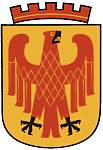 Potsdam City |



|
| Right before our trip came to its end, Volker went to downtown Potsdam for one last time and walked one of Potsdam's main streets, Wide Street (Breite Straße in German), from one end to the other. The hike started at the New-Town Havel Bay (Neustädter Havelbucht in German). |

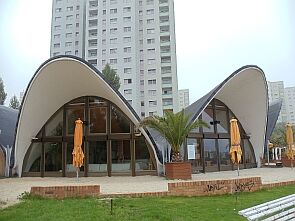
|

|
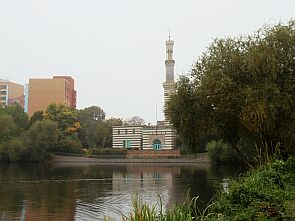
|
|
Most prominent buildings at this bay are a restaurant called Water Lily
(above left) and a mosque that actually isn't one. (above right). The restaurant is a pleasant relief from the usual concrete slab architectur around here.
The mosque is actually a
pump station in disguise.
Ever since 1842, the water for the fountains in town is pumped from river Havel to Louise Square and all the way to Sanssouci Park using
a pump inside the "Mosque." The style of a Moorish mosque was choosen because the minaret was a perfect disguise the original steam engine's funnel. |
| To learn more about the mosque and the bay, click the Tourist-Info sign. |

|
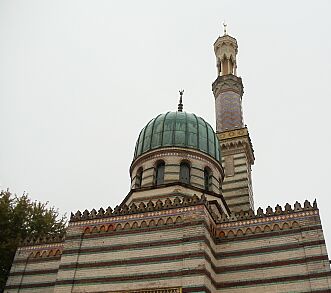 |
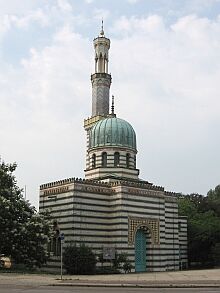 |
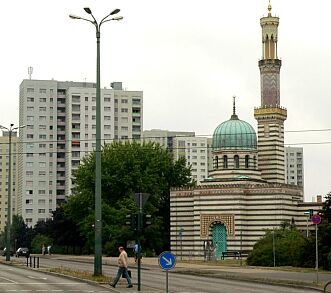
|


|
Under different names, Potsdam's "Wide Street" has been connecting the center of town with the western parts since 1683. Until World War II, it ended at the Neustadt Gate. The gate was destroyed in the war and later, in 1973, the street was extended further west. |
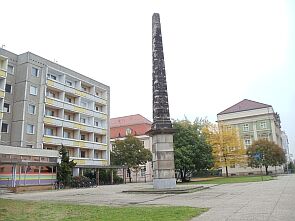
|

|

|
 The only surviving part of the Neustadt Gate is an Obelisk dating back to 1753 (above left). It had been brought back to its original location in 1981. Many of the baroque buildings in this street were irrecoverably lost in World War II, but still, a lot of the original structure survived or has been restored. Amongst them are the House of Nobles (above center), the Royal Exercise and Riding Hall (above right) and the Hiller & Brandt Houses (below left & right). Next to the latter is a small house that claims to be Potsdam's oldest building, although all that is left from the original house built in 1674 is a bust of the Great Elector (below center). |
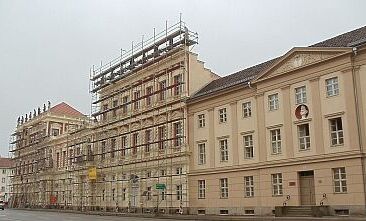 |
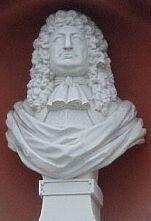 |

|


|
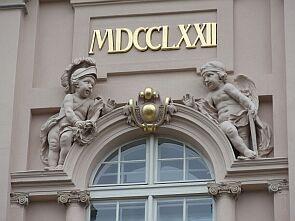
|
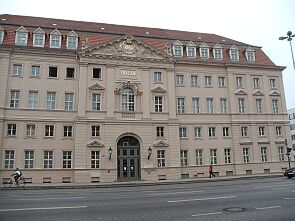
|
| We have a lot more pictures and infomation about all important buildings in this street. Click the Tourist-Info sign and check it out. |

|



|
The mosaic is at the location of Potsdam's most famous lost church, the Garrison Church, which was built here in 1732. The church burned out after
the British 1945 air raid and was consequently demolished by communist authorities in 1968. |
| We have an entire site dedicated to past and future of this church. Click the Tourist-Info sign to get there. |

|
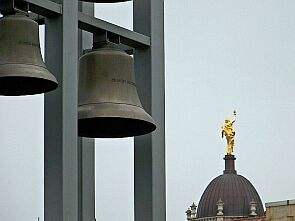 |
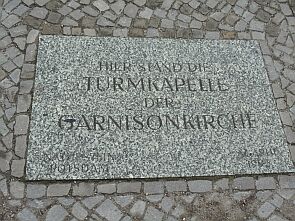 |
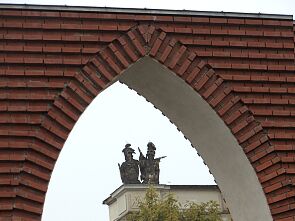
|

| At the last day of our vacation, Steffen introduces us to a totally different part of Potsdam. |

 |
Click the left turn sign to get back to the previous page. Or turn right to visit Hiroshima Square. |

|


 Back to Vacation 2010 |
 Back to English Main Page |
 Back to Start Page |